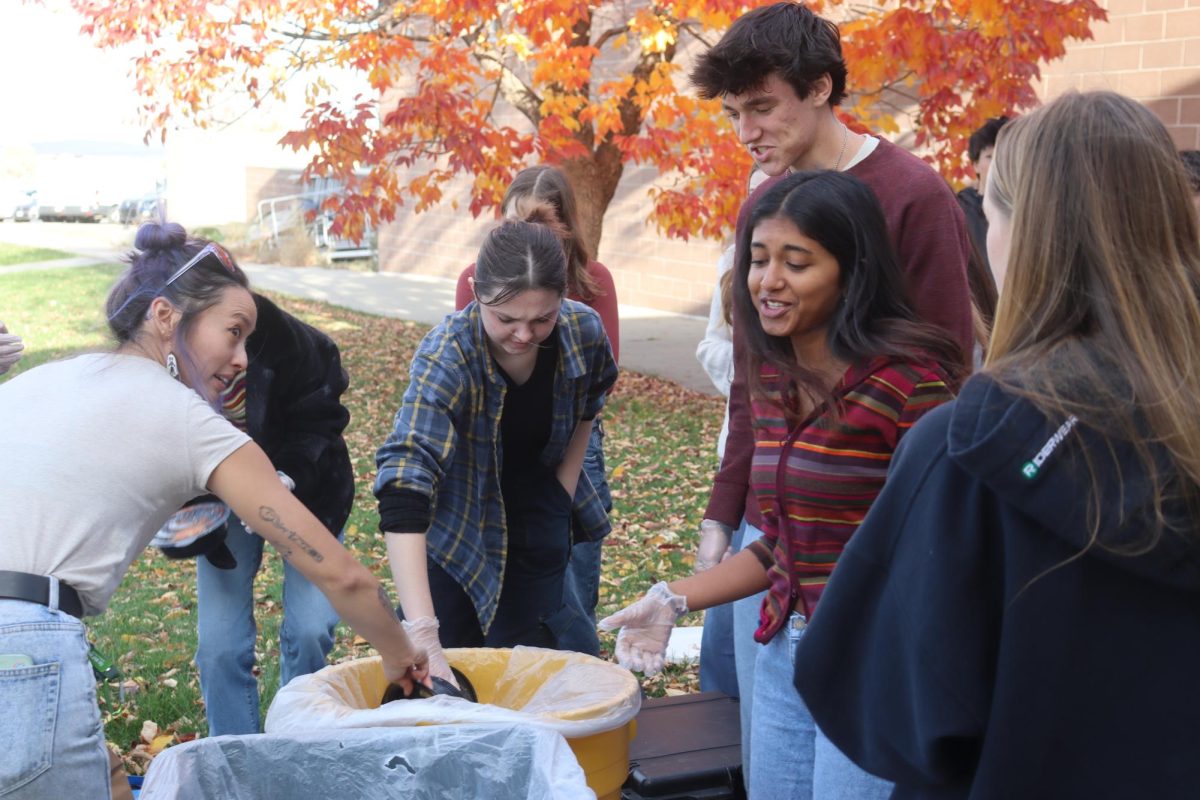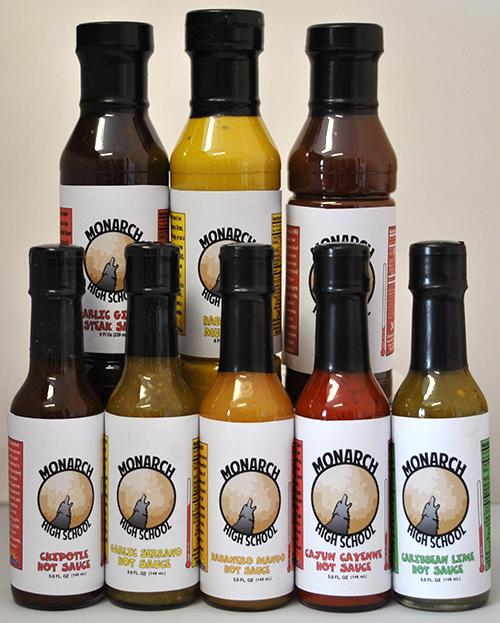Spicy Food: What We Love About it and Why
Hot sauce and hot peppers are the spice of life for many students
Hot sauce bottles from the Howler’s hot sauce fundraiser. All bottles are $7 and flavors include Cajun Cayenne, Garlic Serrano, Carribbean Lime, Chipotle, Habanero Mango, and three signature sauces. Contact any member of the newspaper to purchase your very own bottle.
Tabasco, Cholula, Sriracha, Black Mamba, A Little Nukey, Joe Perry’s Rock Your World Boneyard Brew, jalapeño, habanero, dragon, serrano, cayenne; all of these are spicy sauces and peppers that are used to give that extra “umph” to food. The several thousand peppers and sauces in existence show that this little “umph” is quite popular. The only question now is why.
“It adds a flavor that is a little something extra,” said Nico Rodero, sophomore and spicy food fanatic, “it makes my tastebuds go wild.”
This may be the main goal of hot sauce, to make boring food a little bit crazier. Rodero has been frequently eating spicy food for three and a half years now, but he only has been enjoying it for three of them, “Took me half a year to really get into it,” said Rodero.
In Rodero’s case, spicy food is not something he thinks about a lot, he just puts it on things that seem bland.
For Monarch freshman Madi Bohling, however, spicy food is a big part of her life, and has been since she was very little. “When I was little I used to do Tabasco shots, like I’d put Tabasco in a spoon and eat it.” she said. And in contrast to Rodero, Bohling and her family do think about spicy food consciously. “When we’re making Chinese food we try to make it as spicy as possible,” said Bohling. As Bohling sees it, spicy food is a challenge. “People in America like a challenge, and I feel like sometimes spicy food is a challenge.”
But then that proposes the question: “Why is spicy food a challenge?” When looking at chemosensory receptor cells (taste bud cells), we see that the flavor of spiciness is really just pain in the cells. This makes sense considering the amount of discomfort spicy food can bring (i.e. the tearing up, the redness of the face, the need to fidget, etc.). So, given the fact that spicy food causes pain, it is possible to conclude that spicy food is a challenge because it shows how much pain one can endure.
But then that raises another question of “Why does spicy food hurt?”
*Warning: scientific language is imminent and if you hated biology class skip to the paragraph beginning with ‘In plain English’.*
The substance that actually makes spicy food hurt is called capsaicin. The reason capsaicin causes pain is because it binds to a type of vanilloid receptor in the mouth called a VR1 receptor. When capsaicin binds to the VR1 receptor, the sensory cell loses its polarization, and then sends a signal to the brain saying there is spicy food. The reason spicy food tastes “hot” is because these VR1 receptors actually bind to capsaicin unintentionally, and the actual purpose of the VR1 receptors is to detect heat in food.
In plain English: the ingredient in spicy food binds to a receptor in our tongue that is usually used to detect heat, then the receptor sends a signal to the brain saying there is something hot (i.e. the spicy food).
All spicy food contains capsaicin.
This single ingredient evolved to become a $1.3 billion dollar industry that is now America’s seventh fastest growing industry.































